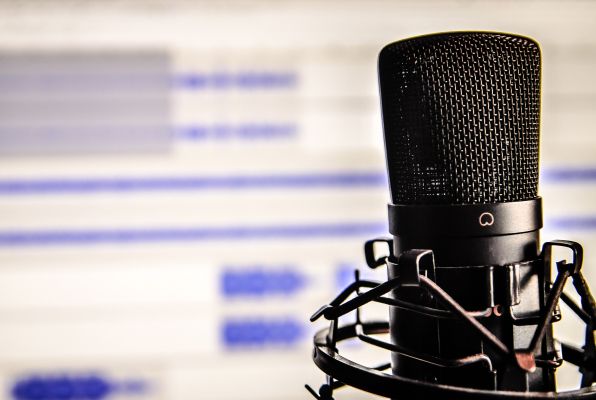The New Dial
The sound is blaring! Podcasts and platforms are streaming, each more sophisticated than the last, all adapting to a new way to consume content.
The other day I was looking for images for a project using the key word “attention,” and what I didn’t expect was that a large part of the suggested illustrations would relate to voice, people listening, and megaphones. it’s because the best way to get people’s attention is by making it so they can hear?
If we’re going by trends in communication, perhaps that’s true. Over the last year, there’s been much said about how voice and sound don’t earn more space in people’s lives. The terminology, however, is important, as it includes different tools. For example, in the voice column we might think about virtual assistants, like Siri e Alexa. In the audio column is spoken content. It’s the audio that’s blaring: podcasts have made a come-back, audio platforms are becoming more sophisticated, and behavior is changing within this spectrum.
This is nothing more than simple evolution. Social media networks have expanded our capacity to consume loads of information and content, and extended text has given way to smaller spaces – let’s face it, it was getting harder to dedicate so much time to reading one subject. On the other hand, staying ahead and assimilating so much wasn’t easy, until video became our saving grace. They made absorbing so much volume possible, and more satisfying, in the same amount of time.


Video formats still leave so much to be explored, but our restless and multi-tasking nature will compel us to continue consuming content while doing other things – though we can’t watch videos while driving, shopping, or cooking… That’s where audio and the wonderful world of podcasts come in. The potential for consumption is enormous – and keeps on growing. In the US, research by Podcast Consumer 2018 showed that 80 million Americans have the habit of listening to podcasts regularly, and after having exhausted the terms “share of mind” and “share of voice”, the new buzzword is “share of ear.”
The podcast market is also immense – think of any subject and there are podcasts that cover it – for a good reason: it’s simple to produce a good-quality podcast. Good hardware is more easily accessible, networks help with editing and there are lots of apps that help with streaming.
Naturally, brands see audio as a worthwhile investment in delivering content and use it as a platform to build relationships and experiences with consumers. That means the content has to be just right. It’s critical that the narrative be relevant, and in a podcast there can be no merchandising or commercial advertising. It has to have a purpose, perhaps educational, entertaining, or provoke discussion. The brand will determine the content that is most appropriate for its personality and narrative, as well as the way in which it should be used in a podcast. Being easy and trendy shouldn’t be reasons to not to have a well-defined strategy and execution.
Tyler Basu, Publisher for Lifestyle Business Magazine, listed seven reasons to invest in podcasts, as a content strategy – they’re all good.
- Convenience and accessibility
- Expands reach and frequency (listeners)
- Inexpensive and quick to produce
- Serves as a forum for hearing from experts in your industry
- Helps set you apart from your competitors
- Build trust with your audience
- Helps attract more consumers
Do you want to sample a freshly new postcast? Talquimy is producing a podcast series, called Fintech Labcast, for our client, Saxo Bank, with its first episode, already available for download, about The Anatomy of the Lie, with professor José Garcez Ghirardi.



